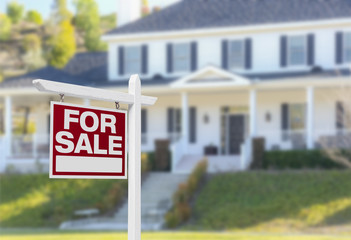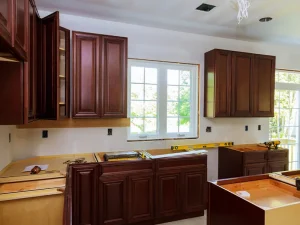Becoming a homeowner is a significant milestone that brings both financial and personal benefits. Owning a home provides stability, independence, and a sense of accomplishment. It is an investment in your future, offering opportunities for wealth-building, personalization, and long-term security. While the process may seem overwhelming, careful planning, research, and preparation can make homeownership achievable and rewarding.

The Benefits of Homeownership
Homeownership offers numerous advantages beyond having a place to live. These benefits include:
- Financial Investment: A home is often one of the largest assets a person can own. Property values tend to appreciate over time, allowing homeowners to build equity and potentially generate wealth.
- Stability and Security: Owning a home provides long-term stability compared to renting, with control over living arrangements and protection from sudden rent increases.
- Creative Freedom: Homeowners can personalize their space, remodel, or make improvements without seeking landlord approval.
- Tax Advantages: Many regions offer tax benefits to homeowners, including deductions on mortgage interest or property taxes.
- Community Connection: Homeownership often fosters stronger ties to the neighborhood, promoting community engagement and social stability.
These benefits make owning a home a desirable and long-term goal for individuals and families alike.
Preparing to Become a Homeowner
Before purchasing a home, preparation is essential. Proper planning ensures a smooth process and prevents financial strain. Key steps include:
- Assessing Financial Readiness: Review income, savings, and debt to determine how much you can afford. Factor in costs such as down payment, closing fees, property taxes, insurance, and maintenance.
- Checking Credit Scores: A strong credit score improves mortgage eligibility and can secure better interest rates.
- Creating a Budget: Plan for monthly mortgage payments, utilities, and other expenses to ensure financial stability.
- Researching Mortgage Options: Understanding different loan types and terms helps in choosing a mortgage that fits your needs and long-term goals.
- Saving for a Down Payment: Building a sufficient down payment can reduce monthly payments and improve mortgage approval chances.
Proper preparation increases confidence, reduces stress, and ensures a more successful homebuying experience.
Choosing the Right Home
Selecting the right home involves evaluating personal needs, lifestyle, and future goals. Consider the following factors:
- Location: Proximity to work, schools, amenities, and public services impacts convenience and quality of life.
- Size and Layout: Determine the number of bedrooms, bathrooms, and living spaces needed to meet current and future needs.
- Condition and Age of Property: Older homes may require renovations, while newer homes might offer modern amenities and lower maintenance.
- Neighborhood Safety and Community: Research crime rates, community engagement, and local development plans.
- Future Growth: Consider potential for property value appreciation and neighborhood growth.
By carefully evaluating these factors, buyers can choose a home that aligns with their lifestyle and long-term objectives.
Navigating the Homebuying Process
The homebuying process involves multiple steps that require attention to detail and careful decision-making:
- Mortgage Pre-Approval: Getting pre-approved helps you understand how much you can borrow and strengthens your position when making an offer.
- Home Search and Inspections: Visit properties, evaluate condition, and conduct professional inspections to identify potential issues.
- Making an Offer: Work with real estate professionals to negotiate a fair price based on market trends and property value.
- Closing the Sale: Review contracts, complete necessary paperwork, and finalize the mortgage to officially become a homeowner.
- Moving In and Maintenance: Plan for moving, set up utilities, and schedule regular maintenance to protect your investment.
Each step requires careful planning, research, and professional guidance to ensure a smooth and successful purchase.
Financing Options for Homebuyers
Financing is a critical component of homeownership. Understanding available options can save money and improve affordability:
- Conventional Mortgages: Fixed or adjustable-rate loans with predictable monthly payments.
- Government-Backed Loans: Programs designed to support first-time buyers or individuals with limited savings.
- Down Payment Assistance Programs: Help eligible buyers reduce upfront costs.
- Refinancing Options: Potential to adjust interest rates and terms in the future to reduce costs.
Consulting with financial advisors or mortgage specialists ensures that buyers select the best financing option for their unique situation.
Preparing for Homeownership Responsibilities
Owning a home comes with ongoing responsibilities. Being prepared ensures long-term satisfaction and protects your investment:
- Routine Maintenance: Regular upkeep prevents costly repairs and preserves property value.
- Property Taxes and Insurance: Budget for annual expenses to avoid financial strain.
- Emergency Fund: Set aside savings for unexpected repairs or urgent needs.
- Upgrades and Improvements: Enhance comfort and functionality through remodeling, landscaping, or energy-efficient upgrades.
Being proactive and organized helps homeowners manage responsibilities effectively and enjoy their investment.
Building Wealth Through Homeownership
Homeownership is a long-term wealth-building strategy. Over time, property values tend to appreciate, and mortgage payments contribute to equity rather than rent. Homeowners can leverage this equity for major life expenses, such as education, starting a business, or retirement planning.
Additionally, well-maintained properties in growing communities are more likely to increase in value, offering both financial security and long-term investment potential.
Becoming a homeowner is a life-changing achievement that offers stability, financial benefits, and personal fulfillment. From preparation and budgeting to choosing the right property and managing responsibilities, each step is crucial to ensuring a successful homeownership experience.
By approaching the process with careful planning, informed decision-making, and long-term vision, individuals can achieve the dream of owning a home. Homeownership provides more than a place to live—it is an investment in the future, a platform for personal expression, and a foundation for building lasting wealth and security.
Embracing the journey to becoming a homeowner empowers individuals to create a stable, comfortable, and rewarding life while enjoying the pride and benefits that come with owning a home.
